
Contents


Free From Human Intrusion
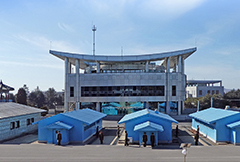

Dreaming of Delightful Zone

Take You to the DMZ

Seeing With the Mind, Talking Through the Lens

the Design of Handheld Fans


Shared Together for Double the Happiness


Founded in the Spirit of Candlelight

The Miracle of Panmunjeom
The Doors Slowly Open
There is one place where North and South Korea, divided since the 1950-53 Korean War, come face to face without any barricades or barbed-wire fences. It is Panmunjeom, where the 2018 Inter-Korean Summit was held on April 27. It has been 65 years since the Military Demarcation Line was established under the Korean Armistice Agreement, and the two Koreas were separated by the Joint Security Area. Today, symbolic Panmunjeom represents how the North and South have transitioned from division to reconciliation over the years.
Written by Park Ji-yeon
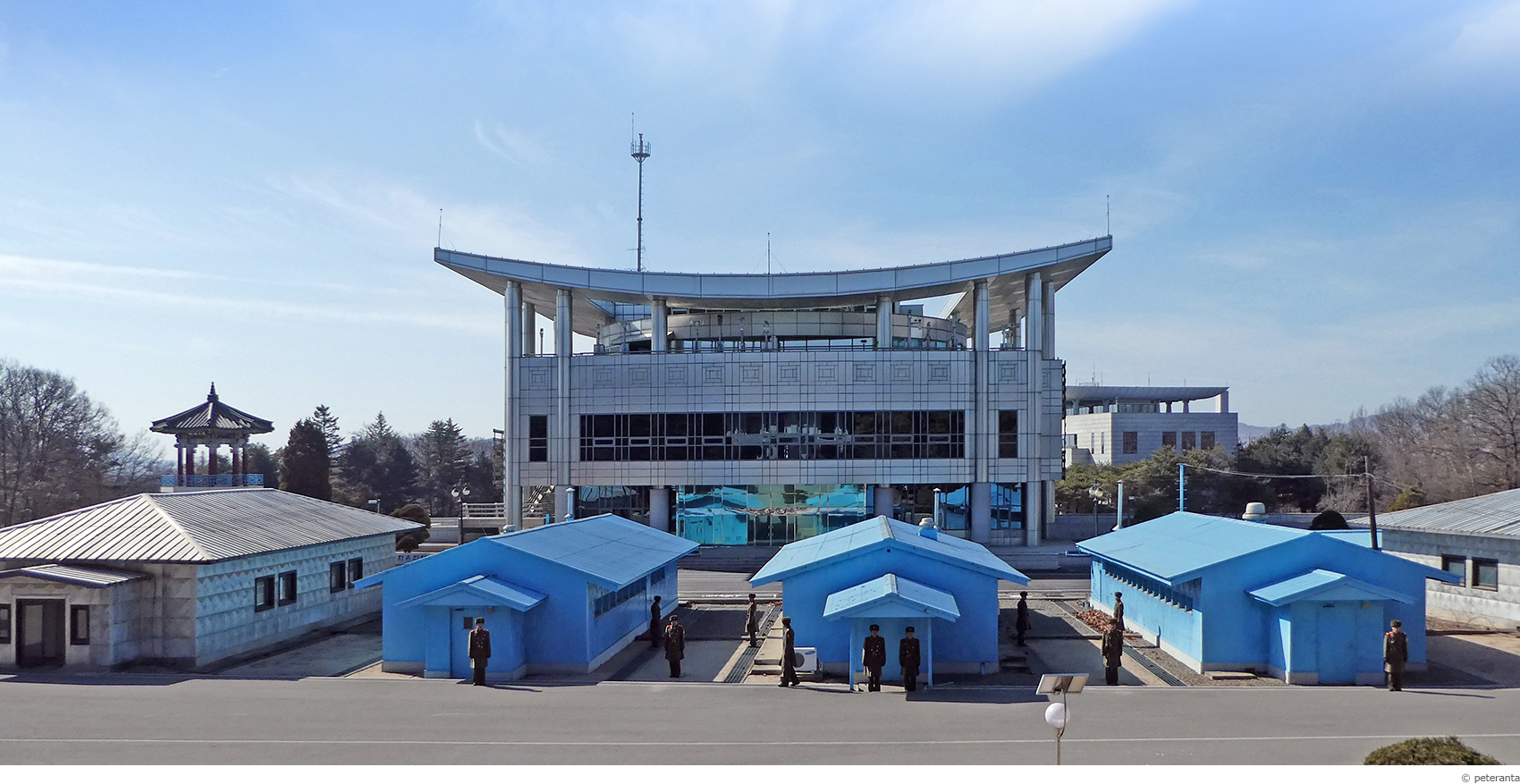
Neither Here Nor There
The spotlight fell on Panmunjeom during the armistice talks in October 1951. The truce village, made up of a handful of thatched houses, was suddenly propelled to international fame. With the signing of the Korean Armistice Agreement in 1953, the area was renamed the United Nations Command Security Battalion-Joint Security Area, or just the Joint Security Area (JSA) for short. It was also featured in the 2000 film “Joint Security Area” (공동경비구역 JSA), directed by Park Chan-wook.
The introduction of the Military Demarcation Line under the Korean Armistice Agreement gave birth to the Demilitarized Zone (DMZ). Panmunjeom, the very place that witnessed all of these historic events, became the symbol of division. The sad fate of the town of Panmunjeom is reflected in its administrative address. It is located in Eoryong-ri, Jinseo-myon, Paju-si in South Korea, but in Panmun-jeom, Panmun-gun, Gaeseong-si in the North.

The Doors Slowly Open
Since the armistice talks, 360 Inter-Korean talks have been held in Panmunjeom. With the two Koreas locked in the world’s longest-standing truce, the border village has been at the center of strained ties. Depending on national policies, Panmunjeom has enjoyed a stream of visitors at times, and turned completely inactive at others. People have trembled in fear of escalating tensions, but have also smiled when there were glimpses of hope.
Panmunjeom was the place where prisoners were exchanged, and delegations interacted with one another.
The doors to Panmunjeom flew open when the late Chung Ju-yung, the founder of Hyundai Group, visited the North with a herd of cattle. The scene was described as “the last work of avant-garde art of the 20th century” by the French critic Guy Sorman.
The two Koreas have been continuing reconciliation efforts since the first Inter-Korean Summit in 2000. The third Inter-Korean Summit on April 27, 2018, was remarkable in itself, but more unexpected was the adoption of the Panmunjeom Declaration for Peace, Prosperity and Unification of the Korean Peninsula. It was a miracle. The signing of the declaration marked the start of a long-awaited era of peace and reconciliation.
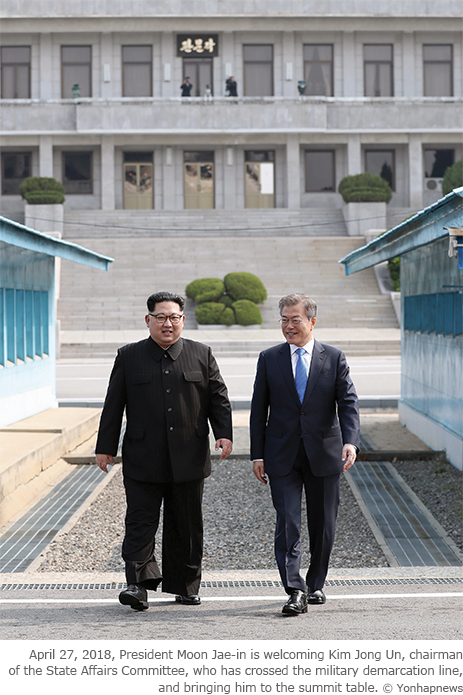
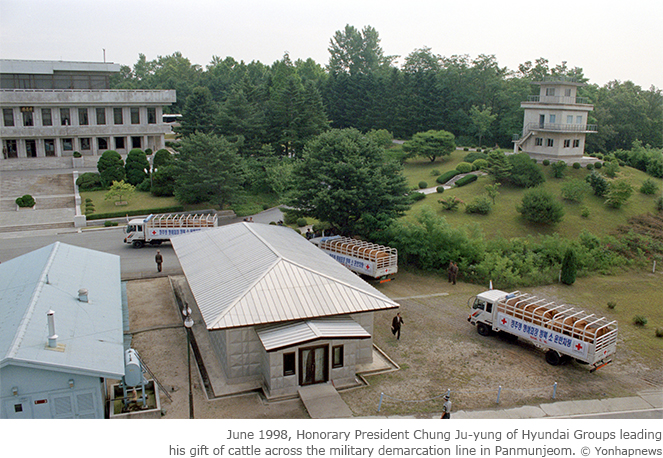
A Fortunate Twist of Fate
On April 27, 2018, the two leaders held hands at the Military Demarcation Line and crossed over to the South Korean side of Panmunjeom. After taking a walk to the Peace House, they sat together for dinner in the evening. The popular South Korean singer Cho Yong-pil took the stage with Hyon Song-wol, the head of North Korea’s Samjiyon Orchestra. Spring has arrived, and the future is bright for Panmunjeom. The people’s wishes led to intensive efforts, and such efforts eventually moved hearts.
A new chapter is being written in the history of Panmunjeom. Today, the soldiers of the two Koreas are still standing guard at the border. The recent summit has no doubt created a change of atmosphere. The Bridge of No Return, where prisoners were exchanged at the end of the Korean War, is also waiting for a change of fate. It yearns to serve as a bridge of peace and connection, allowing people from both sides of the border to pass to and fro.
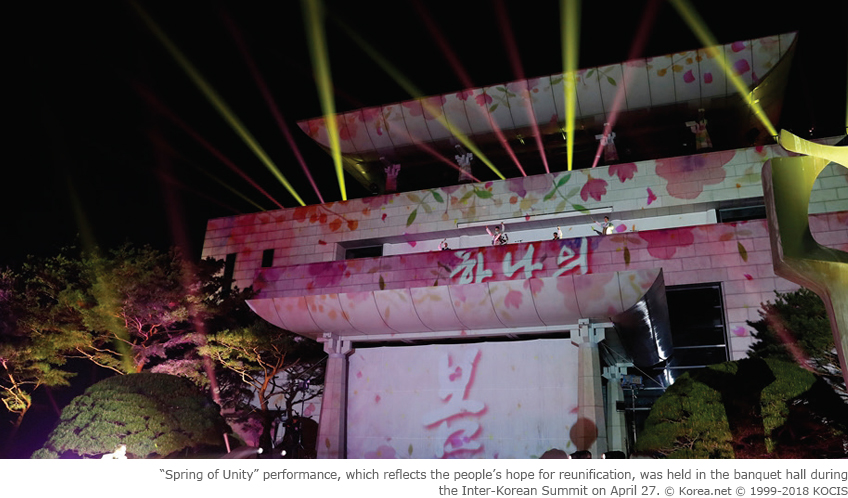
Other Articles



Dreaming of Delightful Zone

Take You to the DMZ

Seeing With the Mind, Talking Through the Lens





Application of subscription
Sign upReaders’ Comments
GoThe event winners
Go


 June 2018
June 2018


